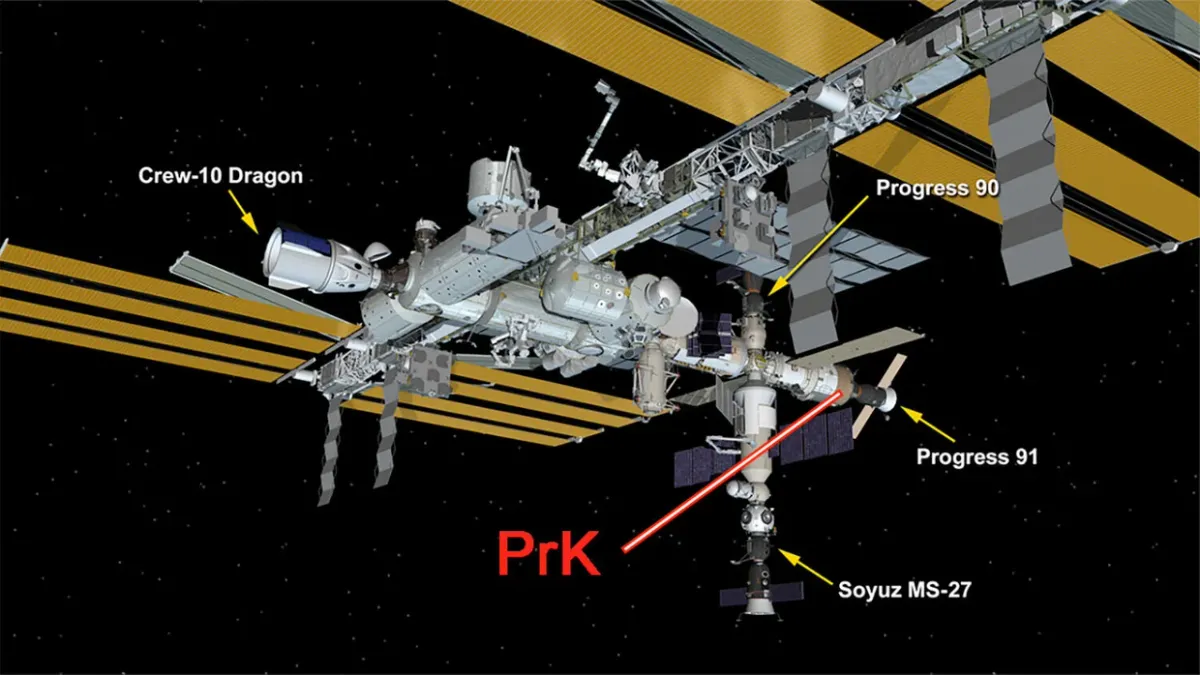NASA has made the difficult decision to delay its upcoming commercial crew launch while engineers race to identify and resolve a persistent air leak aboard the International Space Station that threatens the safety of astronauts and the integrity of humanity's most ambitious orbital laboratory.
linebreak
The delay underscores the complex safety calculations that govern human spaceflight, where even seemingly minor technical issues can cascade into mission-critical concerns. The International Space Station, humanity's most expensive single object and a testament to international cooperation, now faces one of its most challenging technical hurdles in recent years.
The Nature of the ISS Air Leak Crisis
The air leak, first detected several months ago, has been steadily worsening despite multiple repair attempts by the current ISS crew. Located in the Russian Zvezda service module, the leak has forced mission controllers to implement increasingly frequent air repressurization procedures to maintain safe atmospheric conditions for the seven-person crew currently aboard the station.
NASA's Commercial Crew Program, which relies on SpaceX's Dragon capsule and Boeing's Starliner to transport astronauts to and from the ISS, cannot afford to complicate an already precarious situation. The decision to delay the launch reflects the agency's commitment to astronaut safety above all scheduling considerations.
Impact on Space Operations and Crew Safety
The air leak presents multiple challenges beyond the obvious safety concerns. Each lost cubic meter of atmosphere must be replaced using precious cargo capacity that would otherwise carry scientific equipment, food, or other essential supplies. The ISS typically loses small amounts of atmosphere naturally through microscopic gaps, but this leak exceeds normal parameters by a significant margin.
Current crew members have been conducting extensive leak detection procedures, using ultrasonic leak detectors and other specialized equipment to pinpoint the exact location and severity of the breach. These investigations require significant crew time that would otherwise be dedicated to scientific research and station maintenance.
The leak also affects the station's ability to maintain proper pressure for spacewalks, potentially limiting external maintenance activities crucial for the ISS's long-term operation.
Commercial Crew Program Implications
The delay impacts more than just the immediate mission schedule. NASA's Commercial Crew Program represents a fundamental shift in how America accesses space, moving from government-operated shuttles to private sector partnerships with companies like SpaceX and Boeing.
SpaceX has completed over 30 successful crew missions to the ISS since 2020, establishing a reliable transportation system that has reduced American dependence on Russian Soyuz vehicles. However, this delay demonstrates that even the most successful commercial space programs must yield to safety considerations.
The postponement also affects crew rotation schedules, potentially extending the current crew's stay aboard the ISS beyond their planned mission duration. While astronauts train for such contingencies, extended missions can impact both physical and psychological well-being.
Technical Solutions and Timeline
Engineers are exploring multiple approaches to address the leak, including:
- Targeted patching of identified breach points using specialized sealants
- Compartment isolation to contain the leak to specific station modules
- Enhanced monitoring systems to detect future atmospheric losses more quickly
- Backup life support activation to maintain redundant atmospheric systems
The timeline for resolution remains fluid, with NASA officials indicating that the commercial crew launch could be delayed anywhere from several weeks to several months, depending on the complexity of required repairs.
Looking Forward: Lessons for Future Space Operations
This situation highlights the inherent challenges of maintaining complex systems in the harsh environment of space. The ISS, now over two decades old, increasingly faces aging infrastructure issues that require innovative solutions and careful risk management.
The delay also demonstrates NASA's maturation as an organization that prioritizes safety over schedule pressure—a hard-learned lesson from previous space program challenges.
As commercial space operations expand and new space stations enter development, the lessons learned from resolving this ISS air leak will prove invaluable for ensuring the safety and reliability of future orbital habitats.
The space community now watches carefully as NASA and its international partners work to resolve this critical issue, knowing that the solutions developed today will help secure humanity's future among the stars.
Keyword list
Suggested Illustrations
Hero Image (Top of post): ISS floating against Earth backdrop with visible service modules highlighted
Technical Diagram (Mid-article): Cross-section diagram of ISS modules showing leak location
SpaceX Dragon Capsule (Lower section): Commercial crew vehicle in space
Target Audience
Space enthusiasts, science and technology readers, aerospace industry professionals, and general news consumers interested in space exploration and safety issues.
